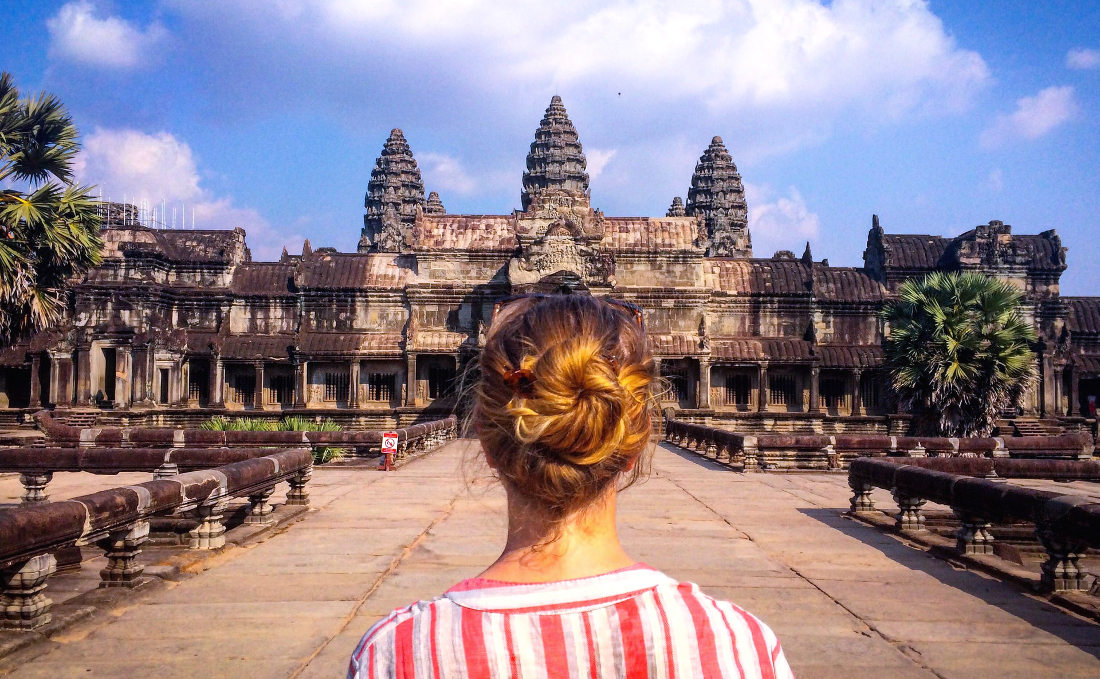Cambodia’s Seasons Explained: Choosing the Best Time to Go
Wherever in the world you’re visiting, an important first step is to check the weather conditions for the time of year you’re planning to go. However, this is an even more important part of the process if you’re heading to a country with a tropical climate, such as Cambodia.
Your experience of this fascinating nation will depend on the season in which you visit. For this reason, it’s essential to research the best time of year to visit Cambodia before arranging your visa and booking flights.
Cambodia has 2 distinct seasons, the wet season and the dry season. Not only will the time of year you choose for your trip dictate the weather, but it will also determine which of Cambodia’s colorful festivals and interesting activities you’ll be able to enjoy.

Visiting Cambodia During the Wet Season
Although the wet season in Cambodia is characterized by heavy rainfall, don’t immediately rule this time of year out. Rainfall during the monsoon season tends to be concentrated over a few hours in the afternoon rather than the entire day, making it perfectly possible to arrange your itinerary around the downpours. Temperatures are between 77 and 80 ºF (25 ºC and 27 ºC).
Cambodia’s wet season stretches from May through to October, during which time the nation receives around 3 quarters of its annual rainfall. The peak monsoon season is from July to September when you may well have rain every day.
What to do in Cambodia during the wet season
If you are prepared to get wet then you can enjoy Cambodia at perhaps its most beautiful during the monsoons. The countryside is lush and green as the fauna and flora flourish thanks to the daily watering.
Visiting Cambodia’s most iconic monument, Angkor Wat, is an extra special experience in the low season. With fewer tourists, you won’t be up against the crowds. Moreover, the forests surrounding the temple complex are vibrant and leafy.
The wet season is also the best time of year to visit one of Cambodia’s floating villages. For an insight into local village life, go to Kompong Khleang, one of the floating villages on Tonle Sap Lake close to the bucket-list city of Siem Reap. Here you can take a boat tour around the village and see the thousands of ingenious floating and stilted houses whilst finding out about the Khmer culture and local fishing practices.
Even when it is raining, there are plenty of interesting things to do in Cambodia. Take some time to rest and unwind at one of the many spas, particularly in large cities such as Phnom Penh and Siem Reap.
For a cultural fix, head to one of Cambodia’s museums or art galleries. The National Museum of Cambodia, which showcases ancient artifacts and rare statues, is well worth visiting whilst learning about the history of the nation. For a glimpse at modern-day Cambodian culture seek out one an increasing number of contemporary art galleries.
Things to consider when visiting Cambodia during the wet season
Whilst there are many advantages to choosing the low season for your trip to Cambodia, there are a few things that you need to think about.
One of the main problems you’ll encounter in Cambodia during the rainy season is the poor road conditions. Dirt roads turn into mud making access to rural areas difficult. You will be able to get around most of the country, apart from the most remote regions, but you’ll need to allow much more time for journeys as traffic moves slowly.
You’ll have to pack appropriately, take a raincoat that you can carry with you at all times, and waterproof footwear for when you inevitably get caught in a downpour. A water-resistant backpack is also a good idea to keep your personal items dry whilst on the move.

Visiting Cambodia in the Dry Season
The dry season, from October through to April, is the most popular time of year to visit Cambodia. Most tourists arrive between November and January when temperatures remain relatively cool, around 80 ºF (26 ºC). These conditions are perfect for exploring the temples that Cambodia is so famous for. Most people avoid March and April as temperatures climb to an uncomfortable 95 ºF (35 ºC)
For this reason, you can expect large crowds at top tourist attractions such as Angkor Wat and Bayon Temple between November and February, prices may also be higher for accommodation and other tourist services as demand is high.
Festivals in Cambodia during the dry season
Visit Cambodia during the high season and you can get involved with one of several annual festivals, including 2 of the most important events of the year:
- Bon Om Touk: The Water and Moon festival takes place at the start of November to celebrate the end of the rainy season
- Khmer New Year: this 3-day event in April is one of the most important on the Cambodia calendar
Tourists are warmly welcomed and it’s a great way to get an authentic insight into the culture and traditions of this fascinating nation.
In summary, Cambodia is a fantastic country all year round with each season offering something special. Pick the time of year which best suits your priorities and you’ll be guaranteed to have a memorable trip.
Cover photo credit: Anna Claire Schellenberg / Unsplash

